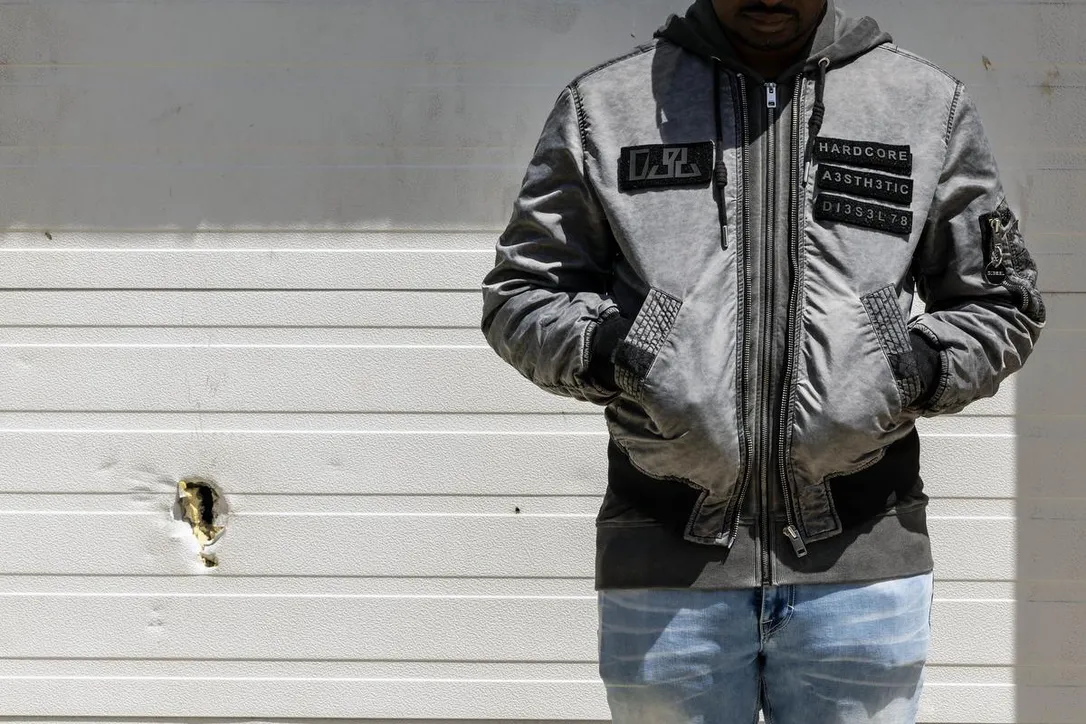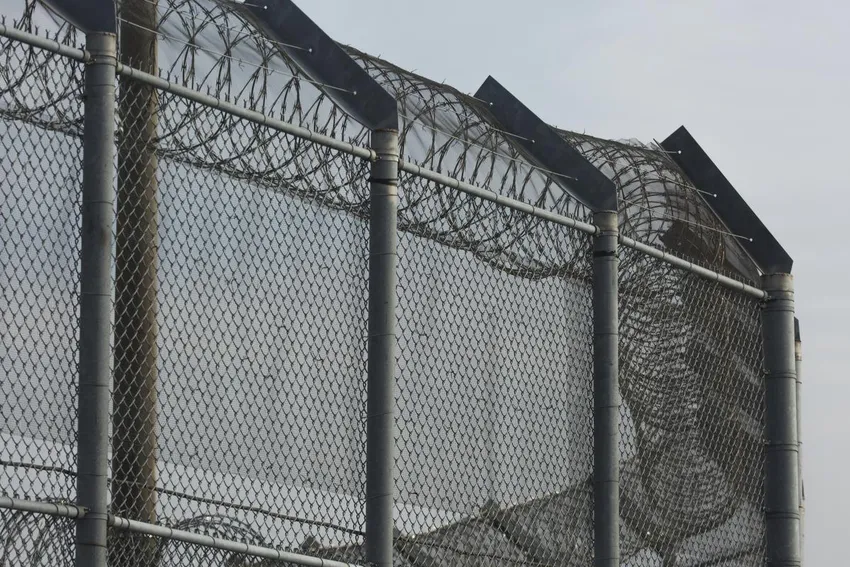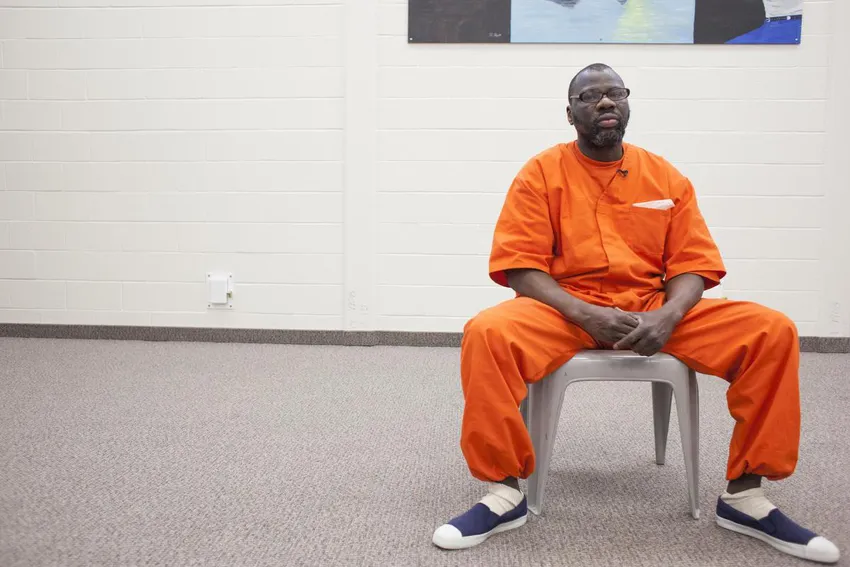Neil Rashad Sturrup had been locked in a maximum-security jail in Milton for nearly two months when he testified about the conditions of his detention.
“How many times a week are you allowed to leave your cell to go take a shower?” his lawyer asked.
“Once or twice,” Sturrup said.
The jail’s frequent lockdowns meant social interactions were limited to a few passing words from guards through the bars, he told the December hearing.
Sturrup, an immigration detainee with well-documented mental illness, was not in an Ontario jail cell because he was charged or convicted of a crime. He wasn’t considered dangerous.
The Canada Border Services Agency (CBSA), in co-operation with Ontario’s government, had locked him up in the most restrictive conditions possible solely because they believed he would not show up for his deportation to the Bahamas, if and when they could arrange it.
The Immigration and Refugee Board adjudicator presiding over Sturrup’s case was concerned that “a vulnerable person with mental health issues” was effectively being held in solitary confinement, and questioned why he was in the provincial jail, rather than the less-restrictive immigration holding centre. She called his treatment “completely unacceptable.”
Across the country a growing number of lawmakers have reached a similar conclusion.
Five provinces have recently scrapped their agreements with the CBSA, signalling an end to the use of jails for immigration detention in half the country.
Meanwhile, the controversial practice continues to be routine in Ontario.
Jailing of detainees is ‘truly shocking’
The federal government claims jails are only used for the highest risk detainees, but a Star investigation found most of the migrants confined in Ontario’s maximum-security jails are being held only on the grounds they are a “flight risk,” not because they pose a risk to public safety. In more than half of the five dozen cases reviewed by the Star, detainees had reported mental health issues.
“It’s truly shocking,” said Allan Rock, a former federal Liberal justice minister who is among those calling for an end to the use of jails for immigration detention. “It runs contrary to what we think of ourselves as being, which is a country that respects human rights.”
In response to questions for this story, a spokesperson for Ontario’s Solicitor General said the province is “reviewing” its agreement with the CBSA, but provided no other details.
Federal Public Safety Minister Marco Mendicino, who is responsible for the CBSA, declined to be interviewed for this story.
Rock said the federal government shouldn’t wait for another province to cancel its agreement before ending the practice nationally.
“We need and expect a government which broadcasts the values that this government broadcasts to act in a consistent way and to put this practice to an end.”
Canada has drawn international condemnation
A 2017 Star investigation, Caged by Canada, shone a light on Canada’s indefinite imprisonment of immigration detainees, including one who spent more than seven years in a maximum-security jail.
The federal government continues to detain thousands of non-citizens each year — 1,391 in the first three months of 2023 alone. Most are held for only a few days, but hundreds each year are locked up for months; in some cases, even years.
Some are former permanent residents who lost their status when they were convicted of crimes. Others are people who overstayed their visas, or were unsuccessful in their refugee applications and are awaiting deportation.
Roughly one in five are sent to provincial jails. There, they are mixed with and treated the same as convicted criminals and those awaiting trial.
Canada’s use of jails for immigration detention has drawn condemnation from the United Nations and human rights groups for years. It has come under increased scrutiny since the fall of 2021, when Human Rights Watch and Amnesty International launched a campaign calling on individual provinces to cancel their agreements with the CBSA in order to end their “complicity in human rights abuses.”
“The worst conditions and the worst violations in this system happen in provincial jails,” said Hanna Gros, a researcher for Human Rights Watch. “This was a way to really tackle the worst abuses.”
She added that ending the use of jails is “low-hanging fruit” for governments because it doesn’t require any legislative change. The practice is governed by simple contracts that can be easily terminated.
B.C. was the first to announce it was ending its agreement with the CBSA last July, saying it did not align with the province’s commitment to uphold human rights. Nova Scotia, Alberta, Manitoba and Saskatchewan have since followed. (The provinces are required to give the CBSA one year’s notice, so their decisions won’t start to take effect until this summer.)
“Half the country is sending a message,” said Mike Farnworth, B.C.’s public safety minister and deputy premier. “This is really not what our provincial facilities should be used for.”
Being put in jail felt ‘like double punishment’
Four hundred and fifty-eight immigration detainees were sent to Ontario jails last year, less than a quarter of whom were considered dangerous by an independent tribunal. More than 80 per cent were detained only on the grounds they were “unlikely to appear” or because their identity needed to be confirmed.
“I think there’s an assumption that the only people who go to jail are people who present some kind of public safety issue,” said Gros. “These statistics really show that that is not the case.”
The CBSA detains non-citizens on one or a combination of three grounds: their identity is in doubt; they are a “flight risk” or “unlikely to appear” for their deportation or hearing; or the CBSA believes they are a “danger to the public,” usually due to criminal convictions for which they have already served their sentence.
A CBSA spokesperson said that even if a detainee is not considered dangerous according to the grounds for their detention, a separate internal risk assessment can still find they pose a danger to other detainees or staff, in which case they will be sent to a provincial jail “for the safety of others.”
The CBSA said more than three quarters of the detainees sent to Ontario jails last year on “flight risk” or identity grounds had prior criminal convictions or outstanding charges.
Anyone in immigration detention who has been criminally convicted or charged has already been freed by a court, either because they have served their sentence, were never held in custody or they have been released on bail. Convictions may be historic, or from another jurisdiction.
“It felt to a lot of us like double punishment,” said Biodun, a 42-year-old former immigration detainee from Nigeria who spent nearly a year in a maximum-security Ontario jail.
(Biodun is a pseudonym. The Star agreed not to publish his real name because he feared retribution from the CBSA, to whom he still reports on a regular basis.)
A failed refugee claimant, he had never been charged with a crime in Canada, and like Sturrup, he was detained only on the grounds that he was a “flight risk.”
He spent his detention in a maximum-security jail — rather than the less-restrictive immigration holding centre — due to an eight-year-old criminal conviction in the U.S., for which he was sentenced to probation.
“Even if you’re going to punish me with something, provincial jail is just way, way overblown.”
Among the arguments against using jails is the fact that immigration detention is administrative, not punitive, according to both Canadian and international law. The only purpose of detaining someone is to ensure the government can deport them. This important distinction is lost, several lawyers told the Star, when you lock immigration detainees up in the same place as criminal offenders.
“You’re essentially punishing people not because they committed a criminal act, but because they’re not Canadian,” said Subodh Bharati, an immigration lawyer who has filed a class-action lawsuit against the federal government on behalf of detainees held in jails. “I think that’s cruel and I think it’s discriminatory.”
Stark differences between jail and immigration holding centres
There are stark differences in the conditions in maximum-security provincial jails compared to immigration holding centres.
Ebrahim Toure experienced life in both.
Toure, 52, spent four years at Central East Correctional Centre in Lindsay, Ont. A failed refugee claimant from West Africa, he had never been to jail before. “I tried to ask the guards, ‘Why am I here? I’m not a criminal.’”
Violence was a daily occurrence. Strip searches were routine. Lockdowns constant.
“At one point I went two months without going to the yard,” he said. “No fresh air.”
Tortured by the indefinite nature of his detention, Toure’s mental health deteriorated. He started hearing voices. He was suicidal.
In 2017, a court ordered his transfer to the immigration holding centre in Etobicoke, ruling that holding Toure in a maximum-security jail while the government tried to deport him amounted to cruel and unusual treatment.
It was “still a prison,” Toure said of the holding centre, but the conditions were much better.
He was able to go outside every day. There were no lockdowns or strip searches. He wore his own clothes, rather than an orange jumpsuit, and he had privacy when he showered or used the toilet. He could make phone calls whenever he wanted. Friends visited nearly every day.
The CBSA says it is “actively working” to reduce the use of provincial jails, a long-standing commitment that stretches back to Prime Minister Justin Trudeau’s first term.
“The health and safety of those in our care is of paramount importance to the CBSA,” the agency said. “We take this responsibility very seriously.”
The proportion of immigration detainees held in jails has shrunk from 32 per cent in 2015, the year Trudeau was elected, to an average of 24 per cent over the last five years.
However, jails still account for more than half of the total days spent in immigration detention because most long-term detainees are held there.
CBSA alone chooses where detainees are locked up
The Immigration and Refugee Board adjudicator presiding over Sturrup’s case said she was “significantly alarmed” by the conditions of his detention. But there was little she could do about it.
The quasi-judicial tribunal oversees the CBSA’s decision to detain someone; the CBSA alone chooses where detainees are locked up — a decision made by a single officer who fills out a risk-assessment form.
The adjudicator in Sturrup’s case wasn’t prepared to release him outright, but she did order an expedited followup hearing and urged the CBSA to consider transferring him to the immigration holding centre.
Two days before that hearing, the CBSA did just that. They didn’t explain why Sturrup wasn’t transferred earlier. The adjudicator said she was “pleased,” but it didn’t erase what Sturrup had endured for the previous two months — suffering she attributed to the CBSA’s “lack of diligence.” Despite her frustration, she could only scold the agency.
Sturrup had for weeks requested a transfer to the immigration holding centre, but the CBSA said he was “unsuitable” for the less-restrictive facility due to outstanding assault charges (which had been stayed by the Crown, pending his deportation), his “history of non-compliance” with immigration officials and his “interactions” with CBSA officers when he was arrested.
Efrat Arbel, an expert in refugee law and professor at the University of British Columbia’s law school, said the process by which the CBSA determines where to send immigration detainees is “highly discretionary” and lacks the procedural safeguards present in criminal law.
“In immigration law, there are no safeguards, and yet people are subject to the very same deprivation of liberty, sometimes in the same facilities and sometimes in the same cell.”
What’s in it for Ontario?
Given Ontario’s jails are already dealing with crisis-level overcrowding and insufficient staffing, why does the province allow the CBSA to use its facilities for immigration detention? What’s in it for Ontario?
Solicitor General Michael Kerzner, who’s responsible for Ontario’s jails, did not respond to an interview request and his office did not answer a detailed list of questions.
Ministry officials denied the Star’s freedom of information request for briefing materials related to immigration detention, citing multiple exemptions, including that they contain advice from a public servant and deliberations of cabinet.
Some immigration lawyers suggested in interviews the province could be in it for the money.
As per Ontario’s agreement with the federal government, the province is paid a 20-per-cent administrative fee by the feds on top of a daily “per diem” for each immigration detainee in its custody equal to the average daily inmate cost — $409 in 2020-21, according to Statistics Canada. (Ontario’s average daily inmate cost shot up during the pandemic. It was around $300 in the two years prior.)
Ontario, which accounts for half of all the immigration detainees in jails across the country, appears to be the only province that gets the 20-per-cent bonus.
Other critics have suggested the use of jails for immigration detention continues simply because of political inertia.
Farnworth, B.C.’s public safety minister, admitted even he wasn’t aware of the extent to which his province’s jails were being used for immigration detention until human rights campaigners brought the issue to his attention.
Samer Muscati, associate director of Human Rights Watch, said the jailing of immigration detainees persists because it occurs in the shadows to powerless people.
“We’re dealing with a population that is essentially invisible,” he said. “That’s the only way officials get away with it.”





